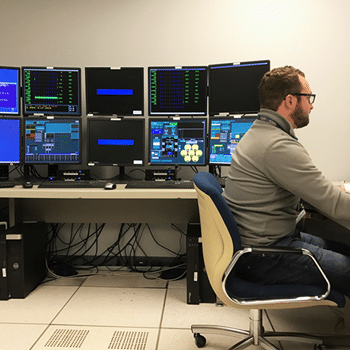What do you do when your testing center is in Manitoba and your laboratory is in Ohio? For GE Aviation, there’s no need to pick up and move: all it takes is an ultra-high-speed broadband connection to connect the two.
Canada’s chilly northern climate rarely gets counted as an advantage. People usually prefer warm and sunny, not ice-and-snowy. But at GE Aviation’s cold-weather testing facility in Winnipeg, the frosty winter weather is an important asset.
The Aircraft Engine Testing, Research and Development Centre (TRDC) centre combines natural climate conditions with advanced technology to make sure that new generations of jet engines can withstand icy conditions.
The Winnipeg facility may be well-situated for delivering ice certifications to jet engines, but it’s real advantage comes from being located at the cutting edge of the digital industrial revolution.
Since it was opened in 2011, the facility has used industry-leading, high-precision sensors to monitor real-world data like temperatures, pressures, and wind speed, rapidly processing this information for instant, simultaneous analysis.
Throughout 2017, GE is investing $20 million US to upgrade the lab, adding more instrumentation capability and updating equipment, says Donna McLeod, a GE staff engineer at the Winnipeg facility.
“We’re like tornado hunters,” says McLeod. “We are hunting weather, and sometimes you only have a small window.”
Here’s the hitch: GE Aviation is headquartered just outside of Cincinnati, Ohio, which is a 26-hour drive (or 5-hour flight) from Winnipeg. They can’t exactly dash back and forth for every test.
To solve this problem, GE built an ultra-high-speed broadband link to connect the two facilities. This connection plays a pivotal role at the centre. “This real-time connection with Cincinnati speeds up the data analysis process tremendously,” says McLeod. The link with Cincinnati allows engineers to jump into the fray virtually as soon as the necessary weather conditions arise, she adds.
Once the new upgrades are complete, the Winnipeg facility will be producing even more data at each test. High levels of precision are essential for the super-fast detail of engine testing at this site. “Basically, a lot can happen in a half-second event in aviation,” McLeod says.
The upgrades will take place over the summer, and the real fun begins again with tests on the GE9X—the largest jet engine ever created—slated to get underway in December 2018. Bring on the cold.






